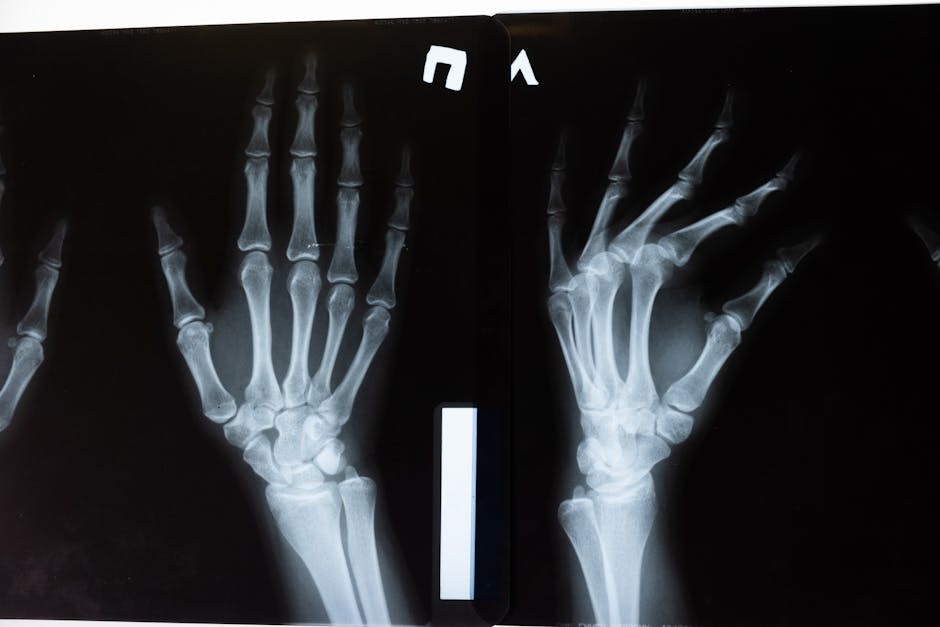Unlocking the Secrets of Joint Health: Best Practices for a Pain-Free Future
Our joints are the unsung heroes of our bodies, enabling us to move, bend, twist, and stretch with ease. From the simple act of walking to the complex movements required in sports or dance, our joints play a vital role in our daily lives. However, as we age or engage in repetitive actions, our joints can begin to wear down, leading to pain, stiffness, and reduced mobility. In this comprehensive guide, we will explore the best practices for joint health, uncovering the secrets to keeping our joints healthy and functional for years to come.
The Importance of Joint Health

Before delving into the best practices for joint health, it’s essential to understand why maintaining healthy joints is crucial. Joints are the connections between bones that allow for movement and flexibility. Healthy joints are necessary for performing daily activities, maintaining an active lifestyle, and preventing injuries. When joint health is compromised, it can significantly impact our quality of life, leading to chronic pain, limited mobility, and reduced independence.
According to the Centers for Disease Control and Prevention (CDC), arthritis affects over 54 million adults in the United States, making it a leading cause of disability. Arthritis, which encompasses over 100 different types of joint diseases, can result in pain, swelling, and stiffness in the joints, affecting individuals of all ages. By implementing best practices for joint health, we can reduce the risk of developing arthritis and other joint-related conditions.
Proper Nutrition for Joint Health

One of the foundational pillars of joint health is proper nutrition. The foods we eat play a significant role in supporting the health of our joints, as certain nutrients help build and maintain strong bones and cartilage. Incorporating a balanced diet rich in vitamins, minerals, and antioxidants can help prevent joint deterioration and reduce inflammation.
Key nutrients for joint health include:
- Omega-3 fatty acids: Found in fatty fish, flaxseeds, and walnuts, omega-3s have anti-inflammatory properties that can reduce joint pain and swelling.
- Vitamin C: Crucial for collagen synthesis, vitamin C is abundant in citrus fruits, bell peppers, and strawberries, supporting the structure of joints and connective tissues.
- Calcium and Vitamin D: Essential for bone health, calcium and vitamin D can be obtained from dairy products, leafy greens, and sunlight exposure, promoting strong bones and joints.
- Antioxidants: Foods rich in antioxidants, such as berries, spinach, and nuts, help protect joint tissues from damage caused by free radicals.
By incorporating these nutrients into your diet, you can nourish your joints from the inside out, supporting their function and longevity.
Regular Exercise and Physical Activity

Exercise is another cornerstone of joint health, as it helps improve flexibility, strength, and range of motion. Engaging in regular physical activity can help lubricate the joints, strengthen the surrounding muscles, and maintain healthy weight, reducing the strain on the joints.
When it comes to choosing exercises for joint health, low-impact activities such as swimming, cycling, and yoga are highly beneficial. These exercises help improve joint mobility without putting excessive stress on the joints, making them ideal for individuals with joint conditions or those looking to prevent joint injuries.
Strength training is also essential for joint health, as it helps build muscle mass and support the joints. By incorporating exercises that target the muscles around the joints, such as squats, lunges, and planks, you can improve stability and reduce the risk of joint pain and injuries.
Remember to listen to your body and avoid overexerting yourself, especially if you have existing joint issues. Gradually increase the intensity and duration of your workouts to avoid straining your joints and muscles.
Weight Management and Joint Health

Maintaining a healthy weight is essential for joint health, as excess weight can put additional pressure on the joints, leading to wear and tear over time. According to the Arthritis Foundation, every pound of excess weight exerts approximately four pounds of extra pressure on the knees.
By adopting a healthy diet and engaging in regular exercise, you can achieve and maintain a healthy weight, reducing the strain on your joints and lowering the risk of developing joint-related conditions such as osteoarthritis. Losing even a small amount of weight can make a significant difference in alleviating joint pain and improving mobility.
Focus on incorporating whole foods, such as fruits, vegetables, lean proteins, and whole grains, into your diet, and limit the consumption of processed foods high in sugar, salt, and unhealthy fats. By making small, sustainable changes to your lifestyle, you can support your joint health and overall well-being.
Joint-Friendly Lifestyle Habits
In addition to proper nutrition, exercise, and weight management, adopting joint-friendly lifestyle habits can further support the health of your joints. These habits involve making small adjustments to your daily routine to reduce the strain on your joints and prevent injuries.
Some joint-friendly lifestyle habits include:
- Proper posture: Maintaining good posture while sitting, standing, and moving can help reduce the stress on your joints, especially those in the spine, hips, and knees.
- Ergonomic workspace: If you work at a desk, ensure that your workstation is ergonomically designed to promote good posture and reduce strain on your joints, particularly in the wrists and neck.
- Joint protection: When engaging in physical activities or tasks that involve repetitive movements, use proper techniques and equipment to protect your joints from injury and overuse.
- Stress management: Chronic stress can contribute to inflammation and joint pain, so incorporating stress-reducing practices such as mindfulness, meditation, or yoga can benefit your joint health.
By integrating these habits into your daily life, you can create a supportive environment for your joints, promoting long-term health and mobility.
Supplements and Joint Health
In addition to a balanced diet, exercise, and lifestyle habits, some individuals may benefit from taking supplements to support joint health. While it’s essential to consult with a healthcare provider before starting any new supplement regimen, certain supplements have shown promise in promoting joint function and reducing inflammation.
Common supplements for joint health include:
- Glucosamine and chondroitin: These compounds are essential building blocks of cartilage and may help reduce joint pain and improve mobility in individuals with osteoarthritis.
- Turmeric: Known for its anti-inflammatory properties, turmeric can help reduce joint pain and swelling, supporting overall joint health.
- Methylsulfonylmethane (MSM): MSM is a naturally occurring compound that may help reduce inflammation and improve joint flexibility in individuals with arthritis.
- Fish oil: Rich in omega-3 fatty acids, fish oil supplements can help reduce joint pain and stiffness in individuals with inflammatory joint conditions.
Before adding any new supplements to your routine, it’s essential to discuss with your healthcare provider to ensure they are safe and appropriate for your individual needs. By combining supplements with a healthy lifestyle, you can optimize your joint health and function.
Expert Opinions on Joint Health
Leading experts in the field of orthopedics and rheumatology emphasize the importance of adopting best practices for joint health to prevent and manage joint-related conditions. Dr. Sarah Johnson, a board-certified orthopedic surgeon, highlights the significance of maintaining a healthy weight and engaging in regular exercise to support joint function.
“Weight management is crucial for joint health, as excess weight can accelerate joint deterioration and increase the risk of developing arthritis,” says Dr. Johnson. “By incorporating a balanced diet and staying active, individuals can protect their joints and maintain mobility as they age.”
Dr. Michael Patel, a rheumatologist specializing in arthritis treatment, emphasizes the role of nutrition in promoting joint health. “Nutrient-rich foods such as fatty fish, leafy greens, and colorful fruits and vegetables provide essential vitamins and minerals that support the structure and function of joints,” says Dr. Patel.
By following the advice of experts like Dr. Johnson and Dr. Patel, individuals can take proactive steps to safeguard their joint health and enjoy a pain-free future.
Conclusion
To wrap things up, joint health is a multifaceted topic that requires a holistic approach to maintain and improve. By incorporating best practices such as proper nutrition, regular exercise, weight management, and joint-friendly lifestyle habits, individuals can support the health and function of their joints for years to come.
Remember that everyone’s journey to optimal joint health is unique, so it’s essential to consult with healthcare providers, nutritionists, and fitness professionals to develop a personalized plan that meets your specific needs and goals. By prioritizing joint health and implementing evidence-based strategies, you can enjoy a life free of joint pain and limitations.
Whether you’re looking to prevent joint issues, manage existing conditions, or simply improve your overall well-being, taking proactive steps to care for your joints is a worthwhile investment in your health. Start incorporating these best practices for joint health into your daily routine and experience the transformative benefits of strong, resilient joints that support you every step of the way.




